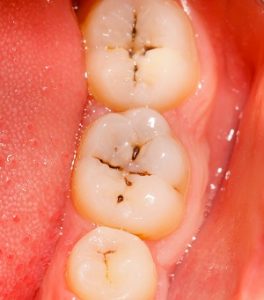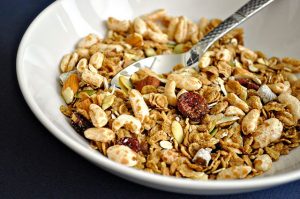25 / 05 / 2023
Breakfast Cereal – What’s In Your Bowl?
Often hailed as the ‘most important meal of the day’, a decent breakfast certainly has a range of health benefits.
As well as providing nutrients, if you have diabetes, a regular healthy breakfast can help to maintain control of blood sugar, can minimise unhealthy snacking later on, and fuels your body to help you function ahead of a busy day.
If you’re breakfasting-ing on sugary cereals, this could account for almost all of your daily sugar intake in one go – leading to health problems and dental decay.

The breakfast of champions
When it comes to breakfast time, cereal remains a popular, convenient, and speedy choice. With the choice on supermarket shelves growing over the years, it can be tricky to choose the healthiest option.
To make things easier, here are 10 well-known cereals which we have looked closely at the nutritional value to see how they perform in terms of sugar, fat, and fibre.
But first, let’s find out a little more about what we should be on the look out for…
What’s in a cereal?
Breakfast cereals tend to be based on grains – some are wholegrains (such as wheat, bran, oats), and others are refined grains (such as maize and rice). Many also have nuts, seeds and dried fruit added to them.

Wholegrain cereals can help to manage blood glucose levels, particularly if you have type 2 diabetes, as they release glucose more slowly as they are low GI.
Recent guidelines highlighted that, as a UK population, we are having too much sugar and not enough fibre. Fibre is important for gut health and some can help towards lowering cholesterol. Some cereals also contain vitamins and minerals such as iron, vitamin D, and B vitamins such as folic acid.
Folic acid is important for healthy red blood cells and also needs to be taken as a supplement both before, and during, pregnancy to reduce the risk of neural tube defects in unborn babies. Folic acid is especially important in pregnant women with diabetes as they need a higher than normal dose in order to prevent these birth defects.
However, beware – some cereals that may appear healthy are not always as good for you as they seem… they can contain high amounts of free sugars and are lower in fibre than is recommended. Remember, the guideline for daily sugar intake for an ADULT is 30g per day.
Here are the findings. Please note that the nutritional information provided does not include milk.
Jordan’s Crunchy Oat Granola – Fruit and Nut
Per 100g
Calories 427
Carbs 64.2
Sugar 28.5
Fat 13.8
Saturated fat 4.4
Salt 0.03
Fibre 6.7
Nestle Shredded Wheat
Per 100g
Calories 362
Carbs 68
Sugar 0.7
Fat 2.2
Saturated fat 0.5
Salt 0.05
Fibre 12
Kellogg’s All Bran
Per 100g
Calories 334
Carbs 48
Sugar 18
Fat 3.5
Saturated fat 0.7
Salt 0.95
Fibre 27
Weetabix
Per 100g
Calories 362
Carbs 69
Sugar 4.4
Fat 2.0
Saturated fat 0.6
Salt 0.28
Fibre 10
Alpen – No Added Sugar
Per 100g
Calories 375
Carbs 65
Sugar 16
Fat 6.2
Saturated fat 0.9
Salt 0.29
Fibre 7.8
Jordan’s Country Crisp – Raspberries
Per 100g
Calories 446
Carbs 67.7
Sugar 18.7
Fat 14.7
Saturated fat 4.6
Salt 0.03
Fibre 5.5
Kellogg’s Fruit and Fibre
Per 100g
Calories 380
Carbs 69
Sugar 24
Fat 6
Saturated fat 3.5
Salt 1
Fibre 9
The findings:
Two of the breakfast cereals – Nestle Shredded Wheat and Weetabix – were both low in sugar, fat, saturated fat and salt.
Other cereals were found to have moderate to high amounts of sugar and fat. The cereals that score high in fat but low in saturated fat are ones in which the fat mainly comes from unsaturated sources.
Two of the cereals – Kellogg’s Fruit and Fibre and Jordan’s Crunchy Oat Granola – scored high for sugar. This sugar comes from sweetened dried fruit added to the cereal, along with added sugar.
Top tips when selecting cereal
Be aware of portion sizes – consider whether the portion size suggested on the box is the same as the portion size you’re consuming. Many people pour a larger bowl and therefore consume more calories and more carbohydrate. This is important if you’re counting calories to control weight.
Weigh your cereal a couple of times to get an idea of the amount you usually consume and then keep a note of this along with other foods you consume on a regular basis. Use this weight against the per 100g values to calculate your intake.
The best start, every day
If you don’t feel hungry first thing, try keeping a box of healthy cereal or porridge at work. Some people find this can be a better alternative to mid-morning snacking on chocolate biscuits once you start to feel peckish!
GET IN TOUCH WITH US
- 3 Duke Street Court
- Bridge Street
- Kingsbridge
- TQ7 1HX











